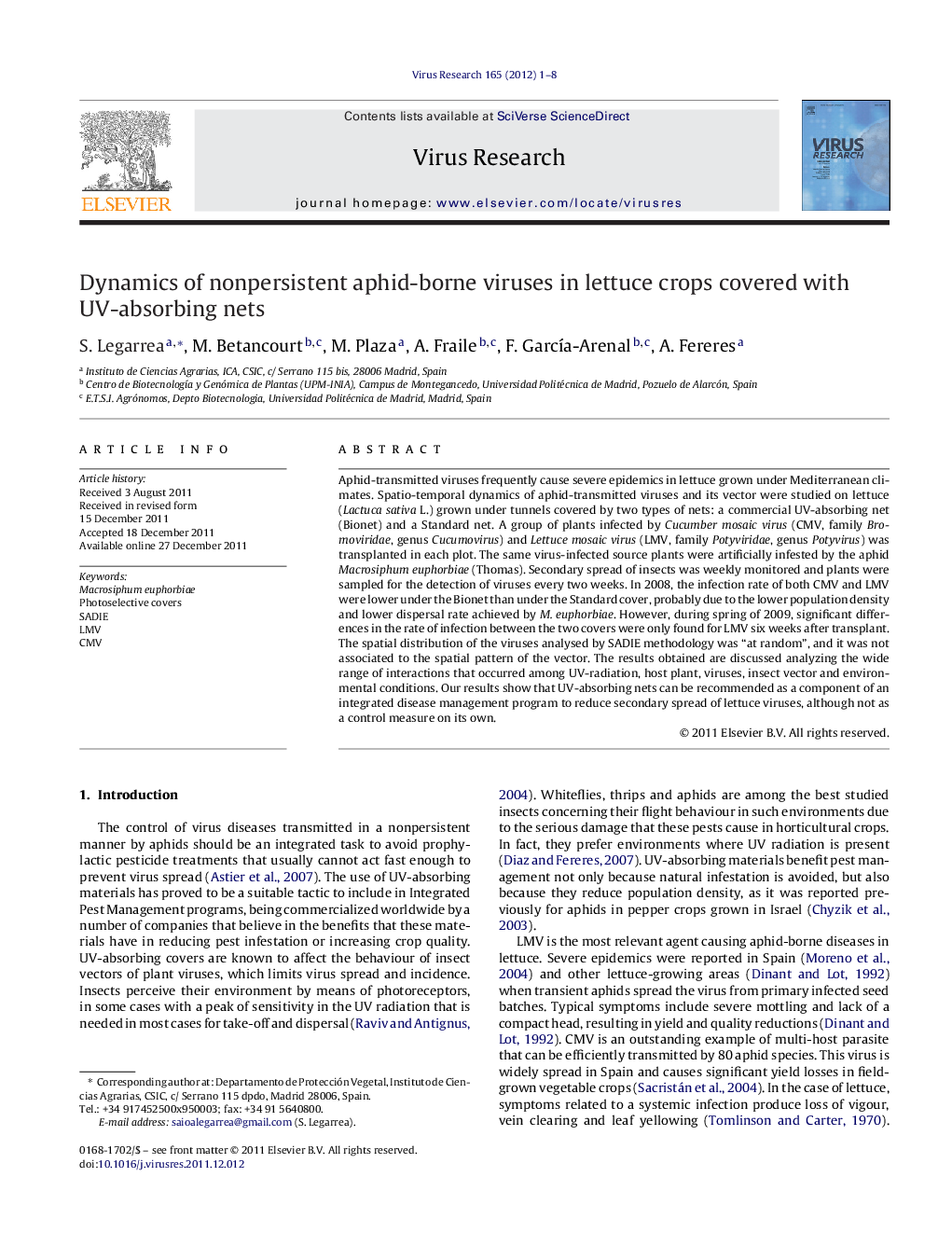| Article ID | Journal | Published Year | Pages | File Type |
|---|---|---|---|---|
| 6143029 | Virus Research | 2012 | 8 Pages |
Aphid-transmitted viruses frequently cause severe epidemics in lettuce grown under Mediterranean climates. Spatio-temporal dynamics of aphid-transmitted viruses and its vector were studied on lettuce (Lactuca sativa L.) grown under tunnels covered by two types of nets: a commercial UV-absorbing net (Bionet) and a Standard net. A group of plants infected by Cucumber mosaic virus (CMV, family Bromoviridae, genus Cucumovirus) and Lettuce mosaic virus (LMV, family Potyviridae, genus Potyvirus) was transplanted in each plot. The same virus-infected source plants were artificially infested by the aphid Macrosiphum euphorbiae (Thomas). Secondary spread of insects was weekly monitored and plants were sampled for the detection of viruses every two weeks. In 2008, the infection rate of both CMV and LMV were lower under the Bionet than under the Standard cover, probably due to the lower population density and lower dispersal rate achieved by M. euphorbiae. However, during spring of 2009, significant differences in the rate of infection between the two covers were only found for LMV six weeks after transplant. The spatial distribution of the viruses analysed by SADIE methodology was “at random”, and it was not associated to the spatial pattern of the vector. The results obtained are discussed analyzing the wide range of interactions that occurred among UV-radiation, host plant, viruses, insect vector and environmental conditions. Our results show that UV-absorbing nets can be recommended as a component of an integrated disease management program to reduce secondary spread of lettuce viruses, although not as a control measure on its own.
⺠The use of UV-absorbing covers interferes with host-finding of insect pests, thus reducing the chance for plant virus transmission. ⺠Aphid population growth and dispersion rate were delayed in lettuce grown under UV-absorbing nets. ⺠Moreover, a lower infection rate of CMV and LMV was only observed when suboptimal conditions for aphid development occurred. ⺠In contrast, the spatial distribution of insects and viruses were not positively associated.
